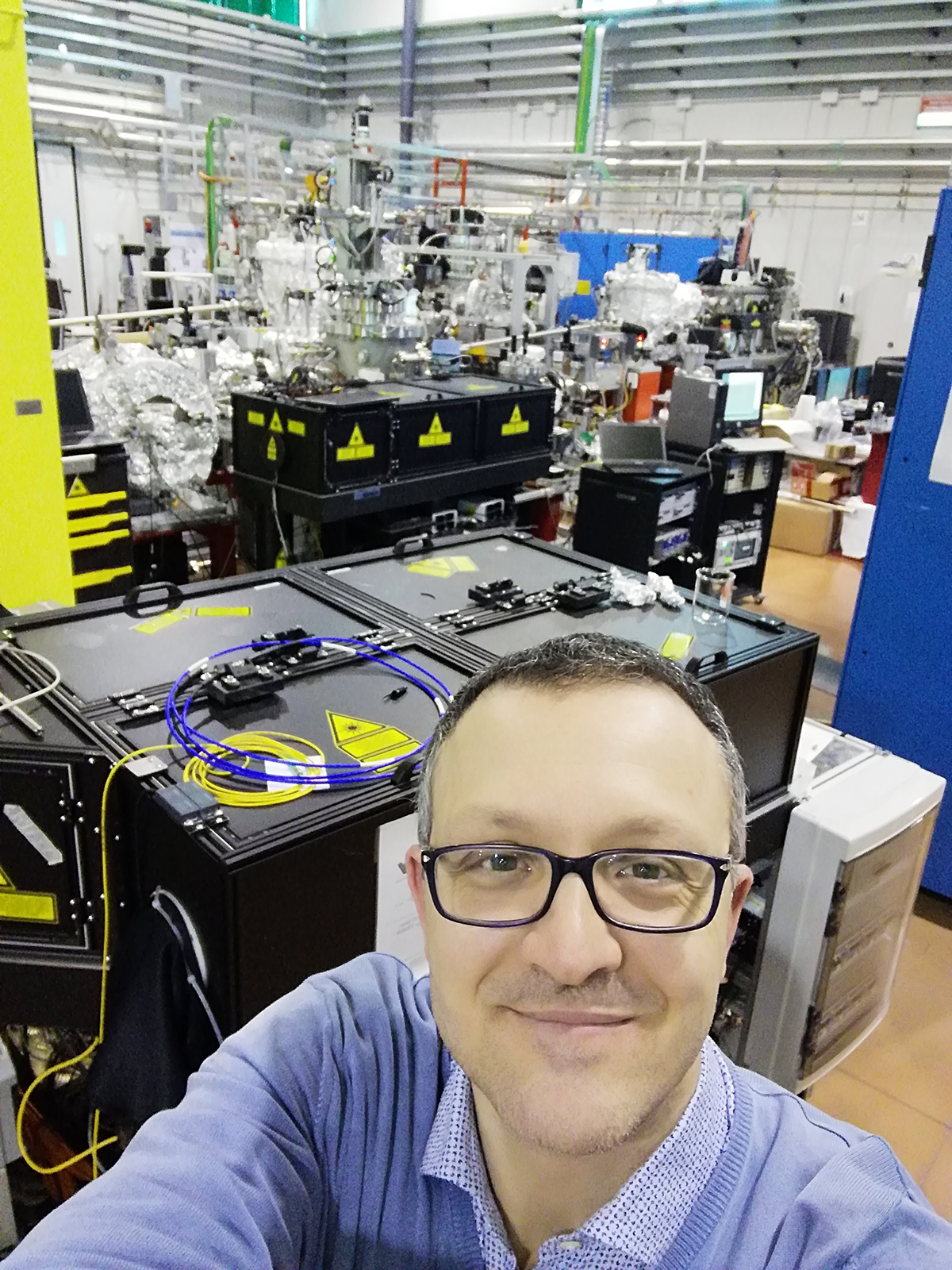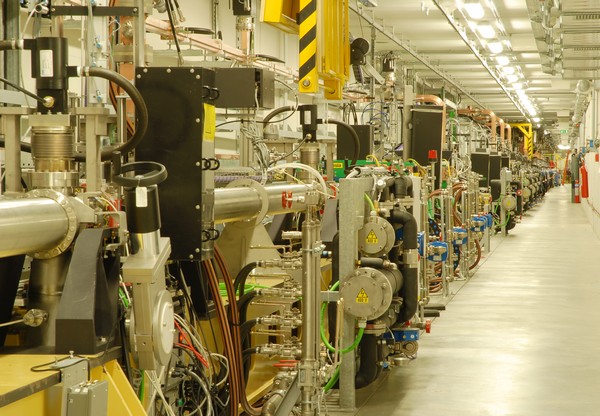Emiliano Principi, Senior Scientist of the FERMI free electron laser facility, explains recent advances in the study of carbon driven to extreme temperatures and pressures through intense ultrashort laser light shots
Research on materials in extreme conditions of temperature and pressure, namely greater than thousands of degrees Kelvin and hundreds of thousands of bars, is crucial for scientific and technological progress. Knowing how matter behaves in extreme thermodynamic conditions helps researchers to comprehend the interior of planets and stars, design reusable orbital class rockets and space vehicles, develop future nuclear fusion reactors.
Ubiquitous but elusive
Frontier research on extreme conditions matter regularly involves carbon or carbon alloys. Carbon is an extremely versatile atomic element that can aggregate in many solid forms with diverse, and sometimes opposite, features. Familiar polymorphs of carbon are graphite and diamond. But other allotropes of carbon either exist in nature or can be synthesised in the laboratory such as graphene, fullerene, carbon nanotubes, lonsdaleite, amorphous carbon, and more. This unique polymorphism, combined with the outstanding lightness and extremely high melting temperature makes carbon and carbon-based compounds attractive to researchers.

Among the diverse condensed forms of carbon that are stable under high pressure and temperature, the liquid phase is probably the most difficult one to analyse in the laboratory. In many extreme conditions experiments, materials are compressed and heated in special diamond anvil cells. Unfortunately, trying to pressurise and melt a carbon specimen using those devices likely leads to the breakage of the anvils that are made of carbon as well. Moreover, at low pressures, hot carbon tends to sublimate thus reaching the vapour phase without passing through the liquid form. Therefore, the study of the response of solid carbon to high temperature and pressure culminating with the melting is both intriguing and extremely complex.
A unique light source
The FERMI free electron laser (FEL) in Trieste (Italy) is a unique large-scale facility delivering intense ultrashort flashes of light in the extreme ultraviolet range, i.e. between the X-rays and the visible light spectral regions. This kind of light pulses lasting a few tens of femtoseconds (one millionth of a billionth of a second) can be fruitfully used to take snapshots of important dynamic physical quantities thus monitoring subtle electronic and atomic properties of matter. The FERMI FEL is, therefore, a remarkable tool for innovative studies on extreme conditions materials.
A specific experimental setup operating at the beamline EIS-TIMEX of FERMI has been designed to generate and investigate liquid carbon specimens under controlled conditions. The beamline is equipped with an additional intense femtosecond pulsed laser operating in the visible range that has been used to pressurise and melt an amorphous carbon foil of submicrometric thickness in a region of about 20 microns. Indeed, materials exposed to ultrashort intense light pulses can reach extremely high temperatures (greater than 10000 K) in a very short time scale. For several hundreds of femtoseconds, the hot sample volume usually remains constant, leading to a temperature-driven increase of pressure.
Too fast to expand
This approach, termed “isochoric heating”, permits creation of the desired extreme conditions on carbon for a limited time interval of about 300 femtoseconds. After this lapse of time, the carbon specimen begins to expand and finally vaporises. The FERMI FEL light pulses are short enough to “take a picture” of the laser-excited carbon sample prior to its irreversible explosion, allowing scientists to analyse the carbon liquid phase under controlled thermodynamic conditions. After exposure to the intense laser shot, the sample is moved by a few tens of microns on a contiguous fresh portion ready to be illuminated by another laser flash. This procedure is repeated hundreds of times.
The data analysis, corroborated by theoretical calculations carried out at the University of Kassel (Germany), indicates that the liquid carbon sample resulting from laser-driven isochoric heating had reached a temperature of about 14000 K and a pressure of 500000 bar. Under those conditions the atomic structure of liquid carbon is different from that of typical liquid metals and looks rather weird. Indeed, carbon atoms are not randomly distributed in the sample volume, surprisingly they are arranged in long chains. This structural rearrangement peculiar of the atomic structure in liquid carbon can explain its macroscopic behaviour and allows scientists to predict the properties of carbon in extreme conditions.
This research paves the way for future investigations on materials under high pressure and temperature, invigorating the field using innovative FEL light sources and hopefully stimulating novel challenging experiments based on the isochoric heating approach.
References
Original scientific article: E. Principi et al. PHYSICAL REVIEW LETTERS 125, 155703 (2020): https://doi.org/10.1103/PhysRevLett.125.155703
FERMI free electron laser lightsource: https://www.elettra.eu/lightsources/fermi.html
EIS-TIMEX beamline: https://www.elettra.eu/lightsources/fermi/fermi-beamlines/eis-timex/eis-timex.html
FELs of Europe newsletter: https://www.fels-of-europe.eu/sites/site_fels-of-europe/content/e212752/e214606/e309255/10thNewsletterFoEJan2021.pdf
Phys.org: https://phys.org/news/2020-09-liquid-carbon-characterized-free-electron.html
Research Outreach: https://researchoutreach.org/articles/understanding-atomic-electronic-structure-solid-density-liquid-carbon/
Please note: This is a commercial profile.
© 2019. This work is licensed under CC-BY-NC-ND.











